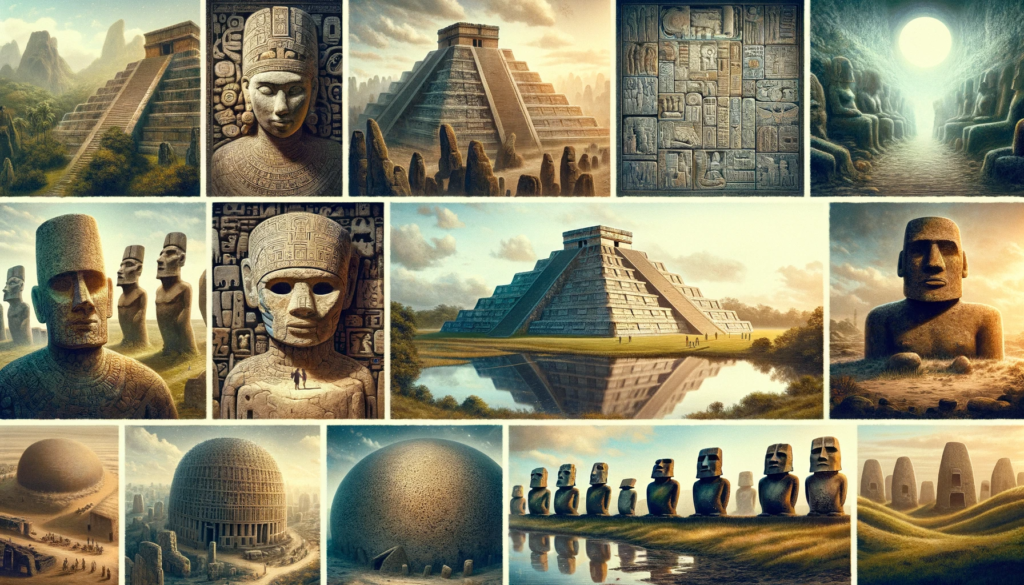Ancient Megafloods and Lost Civilizations
Throughout human history, evidence suggests that our planet has been punctuated by catastrophic events—megafloods, cosmic impacts, massive storms, and fires—that may have profoundly reshaped early civilizations. These ancient megafloods could have erased entire settlements, destroyed vital records, and forced survivors to rebuild, often leaving fragmented knowledge for future generations.
Megafloods Around the World
The geological and archaeological records show that large-scale flooding events were more frequent and widespread than traditionally acknowledged. Some of the most significant megafloods include:
-
Black Sea Deluge (~7,600 years ago): Rising sea levels from melting ice sheets may have catastrophically flooded the Black Sea basin, connecting it with the Mediterranean. This sudden inundation could have forced mass migrations, leaving a legacy in flood myths across Mesopotamia, including the story of Noah’s Flood. Evidence of submerged settlements points to a once-thriving community suddenly overwhelmed by rising waters.
-
North American Ice Sheet Melt Floods: During the late Pleistocene, colossal outbursts from glacial lakes such as Lake Agassiz and Lake Missoula released vast volumes of freshwater into the oceans, triggering rapid sea-level rise and climate perturbations. The resulting floods carved canyons, reshaped river valleys, and may have disrupted human settlements that were already spread across the continent.
-
Mediterranean and Middle Eastern Floods: Archaeological surveys suggest sudden transgressions of sea levels in the Nile Delta, the Levant, and along coastal Turkey. Coastal settlements may have been abandoned, while inland migrations reshaped cultural and social landscapes. These events align with shifts in climate, agriculture, and trade patterns.
-
Southeast Asian and South Pacific Megafloods: Rising oceans at the end of the last Ice Age likely engulfed land bridges connecting islands, submerging entire prehistoric communities. For instance, Sundaland, the vast landmass in present-day Indonesia, would have been partially lost beneath the waves, scattering populations and influencing the spread of early cultures.
-
South American Flood Events: Geomorphological studies in the Amazon and Andean foothills show evidence of rapid sediment deposition, possibly resulting from enormous floods. Such events would have affected early riverine civilizations, disrupting agriculture and prompting migrations into safer regions.
The cumulative effect of these floods would have disrupted early human societies globally. Agriculture, trade routes, and social structures were repeatedly challenged, leaving survivors to adapt, rebuild, and preserve knowledge in fragments.
Cataclysm, Knowledge, and Myth
Plato’s prelude in Critias and Timaeus mentions civilizations destroyed by extraordinary events, forcing humanity to “start anew.” Could these ancient accounts hint at historical realities, now lost or misinterpreted?
The burning of libraries and the loss of records—most famously in Alexandria but also across smaller cultural centers—may have erased critical knowledge of advanced early societies. Ancient stories from Mesoamerica, Peru, Egypt, and other regions could contain fragmented memories of megafloods and other cataclysms, encoded in myths, architecture, and rituals.
Cataclysms Beyond Floods
While water was a primary agent of destruction, other cataclysmic events may have punctuated history:
-
Cosmic impacts could have triggered regional or global disasters, contributing to abrupt climate changes.
-
Wildfires and storms may have periodically decimated forests and settlements.
-
Earthquakes and volcanic eruptions reshaped landscapes, destroyed cities, and obliterated historical records.
Understanding these events challenges the assumption of linear human progress and highlights periods of interruption in civilization development.
Key Concepts to Consider
-
Ancient floods and cosmic events may have repeatedly reset human civilizations.
-
Cultural memory could persist in myth, architecture, and sacred sites.
-
Catastrophic events may explain gaps in archeological timelines and perceived “missing knowledge.”
-
Misinterpretation of ancient texts may obscure our understanding of early human history.
-
Rising sea levels and climate shifts were often drivers for human migration and cultural adaptation.
The Broader Implications
By considering ancient megafloods alongside other cataclysms, we can reevaluate human history. Were early civilizations more sophisticated than traditionally believed? Did survivors preserve only fragments of earlier knowledge? How might global climate shifts, cosmic impacts, and rising seas have repeatedly reshaped societies?
This perspective also invites us to revisit historical narratives of the Nile Valley, Mesoamerica, the Andes, and other regions where ancient knowledge may have been lost, misinterpreted, or erased by natural or human-made events.

Additional reading
- Younger Dryas Impact Hypothesis Explained
-
Robert Schoch – The Sphinx: The Evidence of an Ancient Erosion





